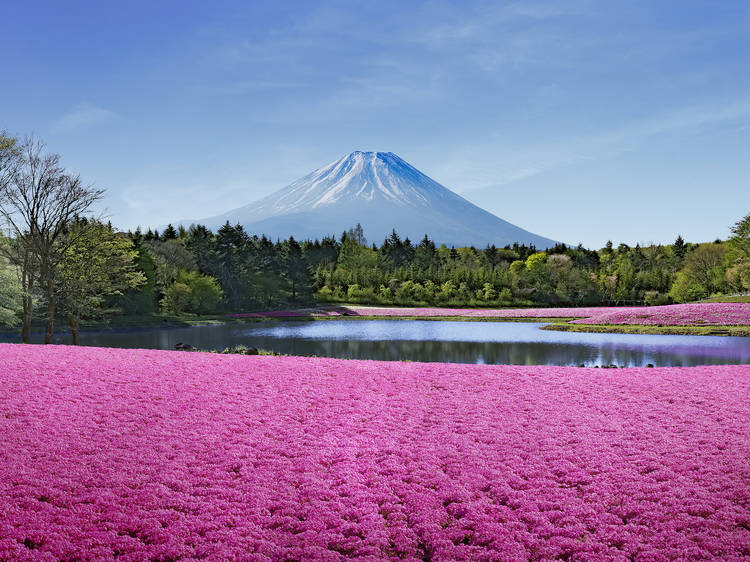
Flowers carry profound symbolism in Japanese culture and are interlaced deeply with the country’s rich history and culture. As the famous Japanese saying goes,
“Tsuki ni muragumo, hana ni arashi,” meaning The moon is often hidden by a cloud; flowers are often scattered by the wind.
Japanese gardens are admired for their serene beauty and aesthetically pleasing landscapes across different seasons; however, they embody deep symbolism. They are emblems of tradition, emotion, and culture, transcending mere decorations.
These gardens are like fancy soirees, a peaceful sanctuary that turn landscapes into a peaceful and serene space, as if you have put an Instagram filter on it. Seasonal changes that lead to different blooms hold profound meanings and are uniquely significant in Japanese culture.
Japanese Flower Culture: An Overview
Flowers carry a more profound meaning and are special in Japanese culture. It is because they are associated with impermanence, humility, beauty, purity, loyalty, and desire. Did you ever come across the fact that Japan has festivals for different Japanese flowers? Mesmerizing, right?
Moreover, have you ever heard of Ikebana? If you don’t know, Ikebana is a traditional Japanese art that involves arranging flowers, stems, and leaves beautifully. The literal meaning of Ikebana is ‘making flowers alive’ or ‘arranging of flowers.’ This flower arrangement expresses a sense of harmony and balance. In addition, this arrangement emphasizes uniting humanity and nature.
Japanese gardens have the most unusual and beautiful blooms across different seasons. So let’s tap into the world of Japanese flowers that bloom in different seasons.
Graceful Spring Blooms
Sakura (Cherry Blossoms)
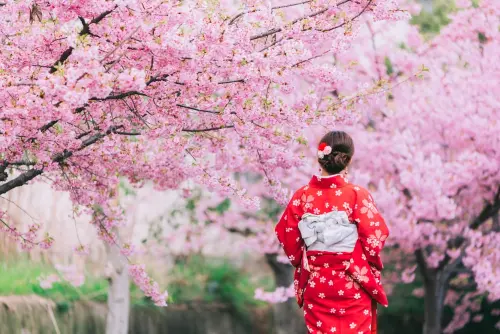
These botanical treasures with light pink flowers seem like pink cotton candy clouds in the sky. These flowers are associated with fleeting time and the beauty of youth. Tokyo’s popular flowers bloom in late March to mid-April.
What’s more, forecasting of cherry blossoms is common in Japan as they have to plan Hanami, a flower viewing tradition.
Ume (Plum Blossoms)
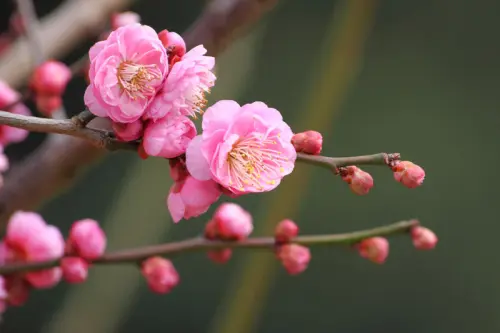
Faithfulness and elegance are what ‘Ume’ means. These pale pink floral motifs represent endurance, perseverance, and resilience. They bloom in early spring, typically mid-February, exhibiting the end of freezing temperatures.
Fuji (Wisteria)
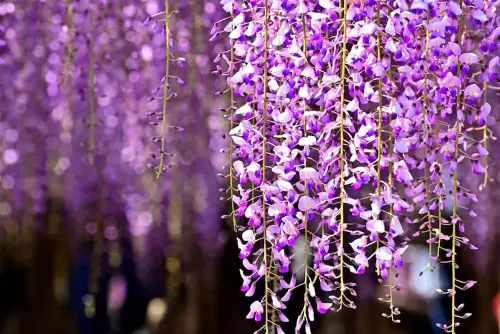
Wisteria is Japan’s local treasure that is pea-like with strongly scented violet buds. These lilac-purple blooms are long clusters cascading like lavender waterfalls. They hang down from the tree branch and are in full bloom during late April to early May.
Summer’s Vibrant Hue Blooms
Hasu (Lotus)
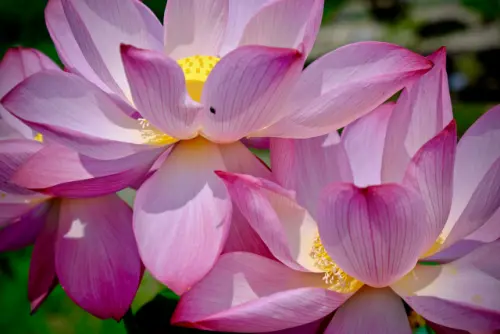
Japanese gardens have lotuses floating in the ponds during summers, and these flowers denote estranged love, sacredness, and pure-heartedness. Lotus has culturally tied two countries, India and Japan, together because of their linkage with Buddhism.
Hanashobu (Japanese Iris)
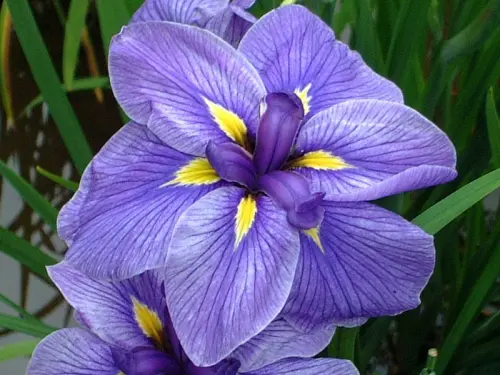
Their striking, sword-like leaves add a burst of drama and vibrant hues to Japanese gardens. This stunning foliage with a light bluish purple tint and striped centrally in yellow denotes loyalty and good news. Irises are in full bloom during June.
Yuri (Lily)
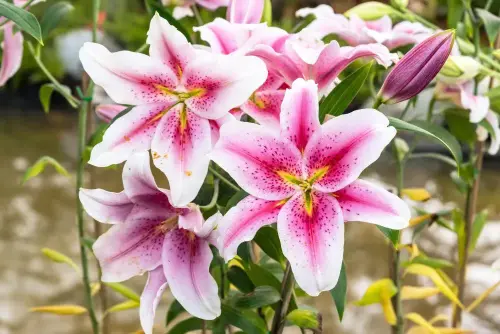
Although there are several species of lilies, the most popular ones grow in Japan. Every summer Japan is graced with white-petaled and multi-colored radial-marked lilies that are utterly sublime and heavenly to look at.
Autumn’s Tranquil Foliage
Momiji (Maple Leaves)
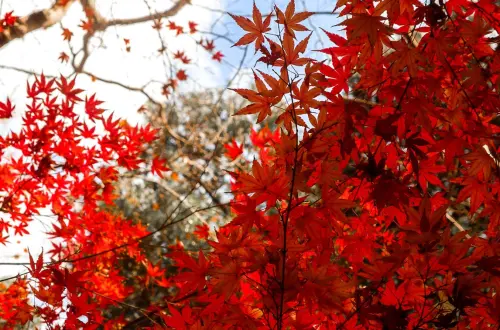
Maple leaves paint nature’s landscape with red, golden, and orange hues, creating a mesmerizing canvas with maple leaves being fiery painters of nature. Momijigari is a Japanese tradition for appreciating and viewing captivating fall foliage.
Kiku (Chrysanthemum)
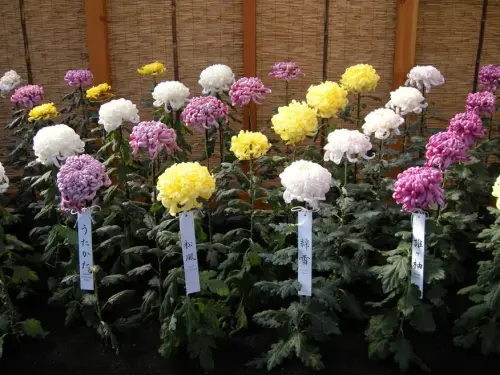
This Chinese native flower blooming in autumn is a representative flower of Japan and also Japan’s passport cover. These blooms have diverse colors and intricate petals signifying loyalty, royalty, nobility, and longevity.
Winter’s Resilient Florals
Tsubaki (Japanese Camellia)
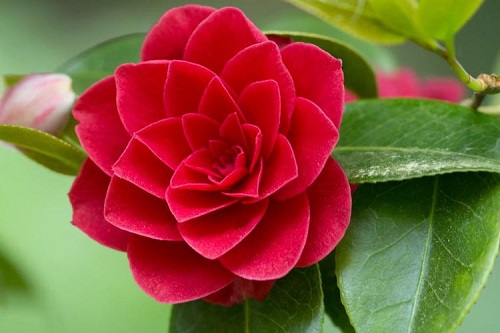
While the world hibernates, these florals bravely stand tall with their sturdy petals and stems, exhibiting their colorful hues in a snow-white landscape. These large flowers grow on vibrant, green shrubs and represent perseverance, strength, and resilience.
Daffodils
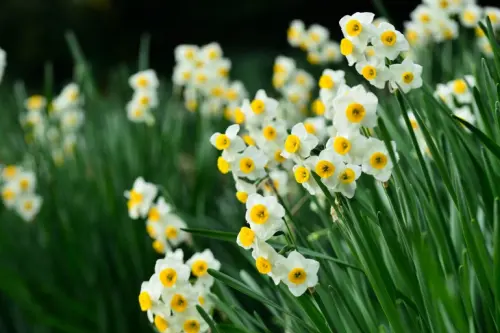
The blooming period of daffodils is from mid-December to the end of January, and Japan holds daffodil festivals in January and February, where these flowers are on display to the visitors.
Christmas Roses
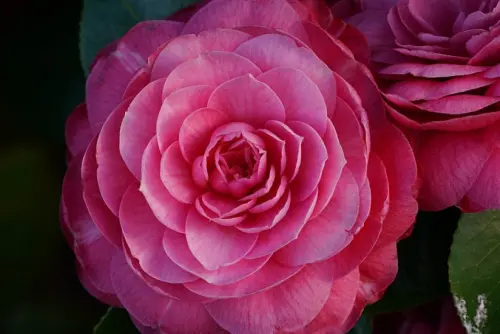
Christmas roses are nothing like roses, and even their growth pattern is not similar at all. They are the most popular winter flowers in Japan that bloom between December and January. It is a symbol of love, hope, and purity.
Ending Note
A Japanese garden, a galore of mesmerizing, vibrantly colored florals, is an inspiration and a timeless reminder that grace, harmony, serenity, and allure can be found in ever-changing seasons. This foliage plays a significant role in evoking emotions and symbolizing cultural values.